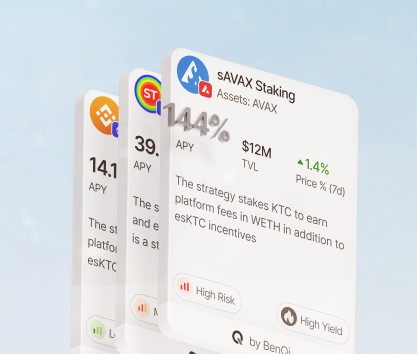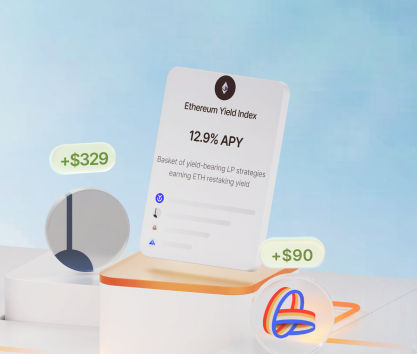While it is possible to make money by sticking to tried and tested strategies without moving an inch sideways, there are some interesting approaches to DeFi investing that can elevate your game to the next level. Many of these strategies are expensive to run and can be difficult to bring to life. However, those who can enjoy all sorts of benefits.
The DeFi ecosystem offers an unprecedented variety of digital assets and financial instruments. Various pools alone form a massive category with 11,000 tracked entries discounting offers from centralized platforms and protocols that are not tracked by aggregators. You can use advanced DeFi trading strategies to achieve success! Finding the right tools to do it is a question that requires some contemplation.
We are going to discuss two distinctly different approaches to making money in the sector. Then, we will tell you how to combine them to make a superior strategy.
Current trends in arbitrage and liquid pools
Using sophisticated approaches to investment is not necessary for the vast majority of successful retail traders to make money. In fact, the simplest systems usually prevail and deliver the best results in the long run. However, it is true that some complicated methods can be fruitful and outperform time-tested strategies.
Crypto arbitrage has fallen out of favor due to the overabundance of automation services that cost literally nothing. However, it can still be used successfully.
Arbitrage in decentralized finance
Arbitrage is a centuries-old method of making money in commodity markets. The idea is to buy low in one market while selling high in another. Contemporary traders can conduct this operation simultaneously by creating orders in opposite directions on two centralized or decentralized exchanges.
In the DeFi ecosystem, manual arbitrage is a thing of the past. Automated trading systems (ATS) react to the appearance of the tiniest of arbitrage opportunities instantly and can reduce overheads by calculating everything before making an order.
To make a trade manually, you have to take into consideration the following:
- Sizes of liquidity pools for crypto trading on DEXes or protocols that you plan to use. For instance, one pool can have a massive TVL of over $100 million while the other will be less than $5 million reducing the profit one can make.
- Prices that you gather from DEXes are based on the last processed block and do not reflect the current situation in the market. Correctly calculating potential gains from each trade can be quite challenging even with years of experience.
- Gas fees also eat away from your profits. Ethereum gas fees can go as high as $100 per transaction during periods of high congestion. While other networks seem to be cheaper, various technological issues and lacking infrastructure often affect gas fees negatively.
Any price difference that you spot can be wiped out by these overheads. Robots can do these calculations efficiently and immediately exploit price discrepancies leaving retail traders who do everything manually biting the dust.
The good thing is that you can use automation too. It can be quite expensive and mentally demanding but results are often worth it.
Contemporary crypto investors have access to a wide range of different automation instruments. Over 65% of surveyed individual traders use automation to at least some degree. Institutions use it in close to 100% of all their operations in the DeFi ecosystem where speed and precision play a crucial role.
Many tools are either very cheap or free. Here are some options that you may be interested in exploring if you want to engage in DeFi arbitrage:
- GunBot is a provider of automation services with flexible pricing and excellent ready-made solutions. It can be used for CEX and DEX trading. Arbitrage is one of the biggest products on the platform.
- HummingBot is an open-source solution developed by a team of enthusiasts. It is backed by industry-leading CEXes like Binance and Coinbase. The app is very clunky and comes without a normal GUI but a technically savvy individual can make it work.
- Many GitHub repositories contain publicly available applications that automate arbitrage trades across the DeFi ecosystem. Setting them up and running them consistently can be challenging even for experienced investors.
If you are interested in automating arbitrage, we strongly recommend familiarizing yourself with HummingBot. It is a powerful tool maintained by a dedicated team of independent developers.
Maximizing profits with DeFi: liquidity pools
Liquidity provision is still one of the biggest investment instruments in the ecosystem. Despite being outmatched by liquid staking and lending, DEXes are some of the best targets for capital allocation if you understand which pools to target.
Here are some tips for investors who want to stay safe:
- Invest in mainstream coins that have relatively stable value. For instance, some of the best pools to work with are the ones that focus on ETH, BTC, stETH, WETH, and so on. These assets are less vulnerable to impermanent loss.
- Some of the safest investments are the ones in stablecoins. USDT, USDC, USDe, DAI, and many other tokens pegged to the US dollar are always in demand. Such investments are often rewarded with APYs consistently beating high-yield bank accounts and US treasury bonds (roughly, 4.1%).
- Never forget the impermanent loss. Up to 50% of all Uniswap investors lose money due to this problem. Pools have to maintain a certain parity between assets and rebalancing can wipe out your gains. Make sure to research how impermanent loss affects your holdings.
- Use TVL as one of the methods of liquidity analysis on platforms like DEXes or AMMs. Total value locked is an important metric that shows you the valuation of assets in a pool and the available liquidity at any given moment. Investing in the USDT-WETH pool on Uniswap with a TVL of over $192 million is always a better idea than something like WETH-LINK with less than $4.9 million.
The biggest issue in liquidity provision is impermanent loss. It occurs on all levels and affects all kinds of assets regardless of their valuation and investor sentiment. When the price falls, rebalancing occurs. Even in the largest pools, impermanent loss can consistently wipe out gains made by investors.
One of the problems here is how communities affect the liquidity of pools. A hyped-up project with many hopeful enthusiasts behind it can reach sky-high TVLs yet generate little value for investors or never reach the necessary level of utilization to be worthwhile.
Searching for a good investment opportunity in the dangerous sea of DEXes and AMMs is often a Sisyphean task that does not lead you anywhere. On the other hand, providing liquidity can be incredibly rewarding if you time your exits correctly, choose good target assets, and avoid being greedy.
Examples of successful arbitrage strategies
Arbitrage in its traditional form is not viable due to high gas fees that require precise calculation for each trade and the prevalence of robots. The competition here is incredibly intense. Running a successful arbitrage system can be profitable if you use it to complement other investments.
On many protocols, rebalancing occurs in certain scheduled periods making it possible to exploit an arbitrage opportunity that arises from the act of rebalancing. Using finely tuned robots to time trades effectively is a good idea for someone who wants to invest in liquidity pools and protect holdings from impermanent loss through arbitrage.
A system like that will need intense testing and scrutiny before it can be used consistently. Nevertheless, it is one of the best approaches to risk management in DeFi trading. It will also require some serious investments from you.
In many cases, it is a better idea to simply use an investment strategy offered to you by a professional. For instance, you can go to Rivo.xyz and look for an option that suits your preferences and risk style instead of experimenting with your portfolio and risking your money.









